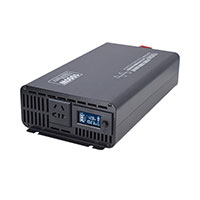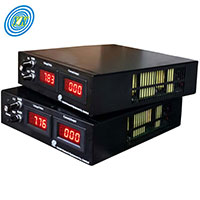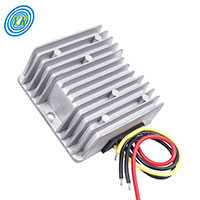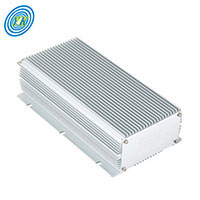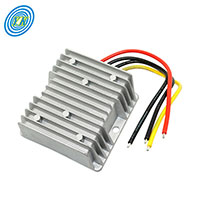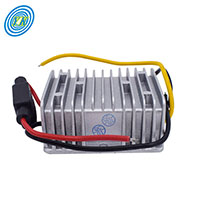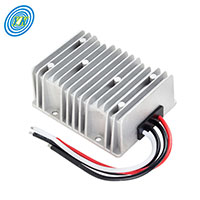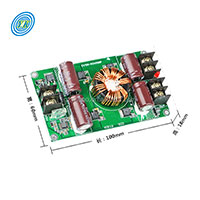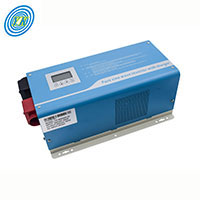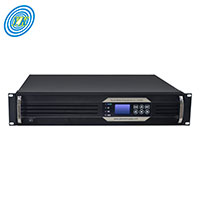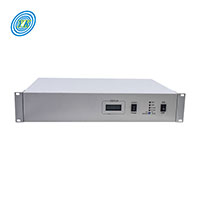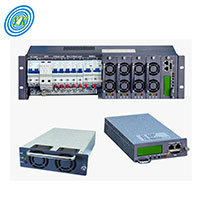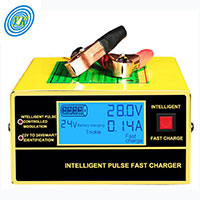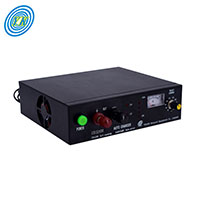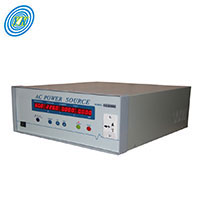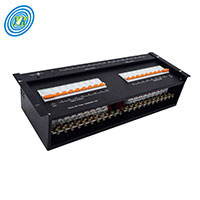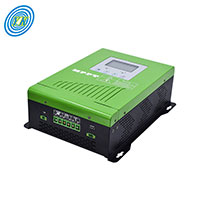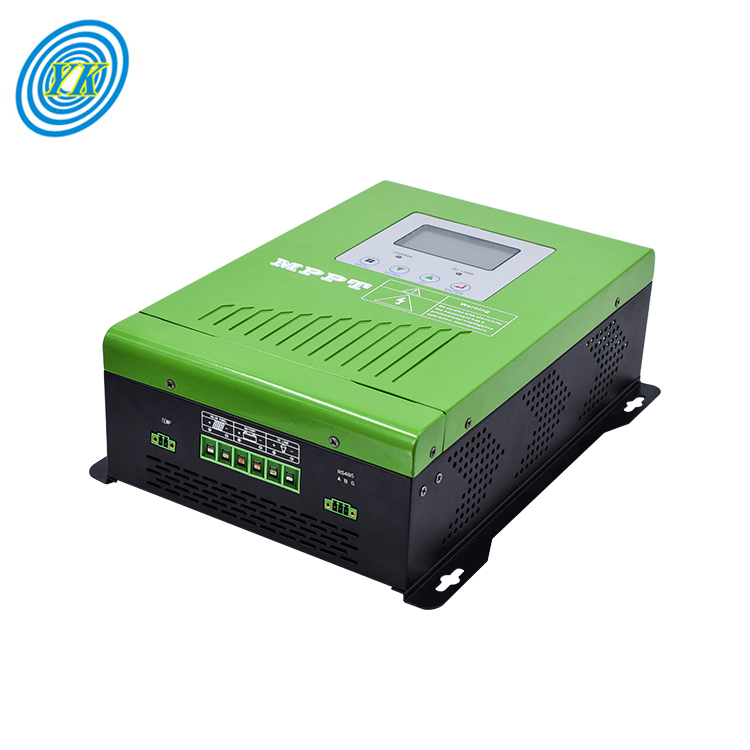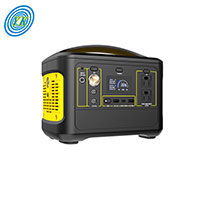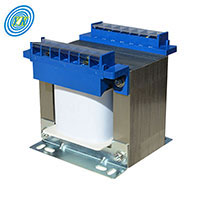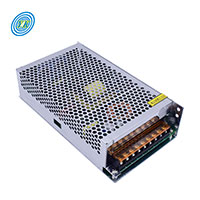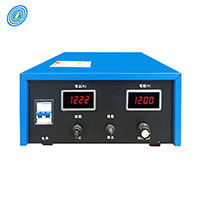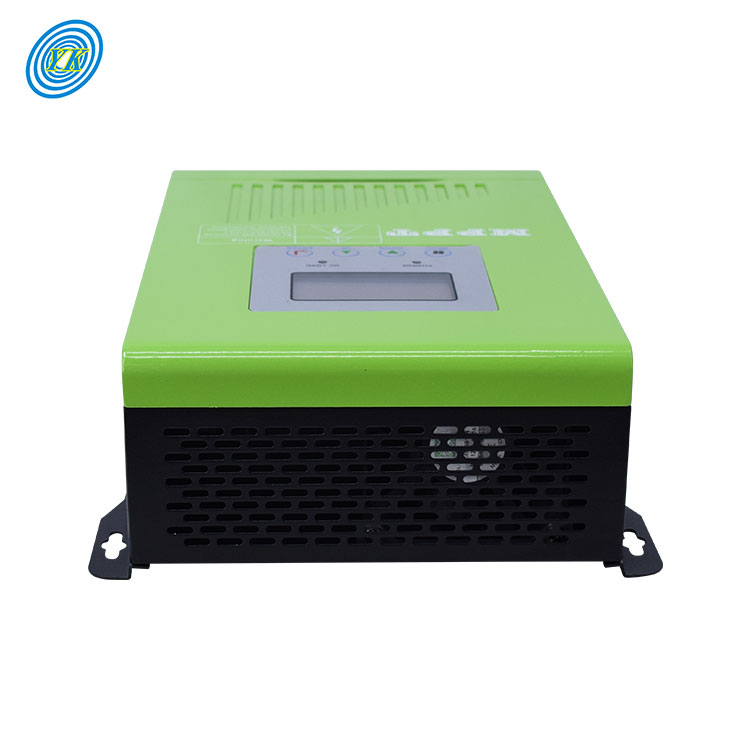
The Future of Energy: Exploring the Potential of MPPT Controllers in Smart Grids
Click: 675 Date: 09/20/2023 4::05::55 PM
The Future of Energy: Exploring the Potential of MPPT Controllers in Smart GridsAs our world becomes increasingly digitized and interconnected, the demand for more efficient and reliable energy systems is growing. At the heart of this evolution is the development of smart grids, a modern form of electricity network that uses digital technology to improve efficiency, reliability, and sustainability of the production and distribution of electricity. One of the key technologies enabling the advancement of smart grids is the Maximum Power Point Tracking (MPPT) controller.What is an MPPT Controller?Before delving into the role of MPPT controllers in smart grids, let's first understand what they are. MPPT controllers are electronic devices that optimize the match between the solar panels (or wind turbines) and the battery bank or utility grid. To put it simply, they ensure that your solar panels or wind turbines generate the most power possible at any given time.The Role of MPPT Controllers in Smart GridsIn the context of smart grids, MPPT controllers play a critical role in managing the flow of electricity from renewable energy sources, such as solar panels and wind turbines. They do this by constantly tracking the maximum power point of these sources and adjusting the power output accordingly. This ensures that the maximum amount of power is extracted from the renewable sources at any given time, thereby improving the overall efficiency of the smart grid.The Impact on Energy Efficiency and SustainabilityBy optimizing the power output from renewable energy sources, MPPT controllers can significantly improve the energy efficiency of smart grids. This is particularly important in today's world, where there is a growing demand for more efficient and sustainable energy solutions. By improving energy efficiency, MPPT controllers can help reduce our reliance on fossil fuels, thereby contributing to the fight against climate change.The Future of MPPT Controllers in Smart GridsLooking ahead, the role of MPPT controllers in smart grids is likely to become even more significant. As more and more households and businesses adopt renewable energy solutions, the demand for efficient and reliable energy management systems will continue to grow. MPPT controllers, with their ability to maximize the power output from renewable sources, will be at the forefront of this transition towards a more sustainable and efficient energy future.In conclusion, MPPT controllers represent a crucial technology in the development and advancement of smart grids. By optimizing the power output from renewable energy sources, they can help improve the efficiency and sustainability of our energy systems, paving the way for a more sustainable and efficient energy future.
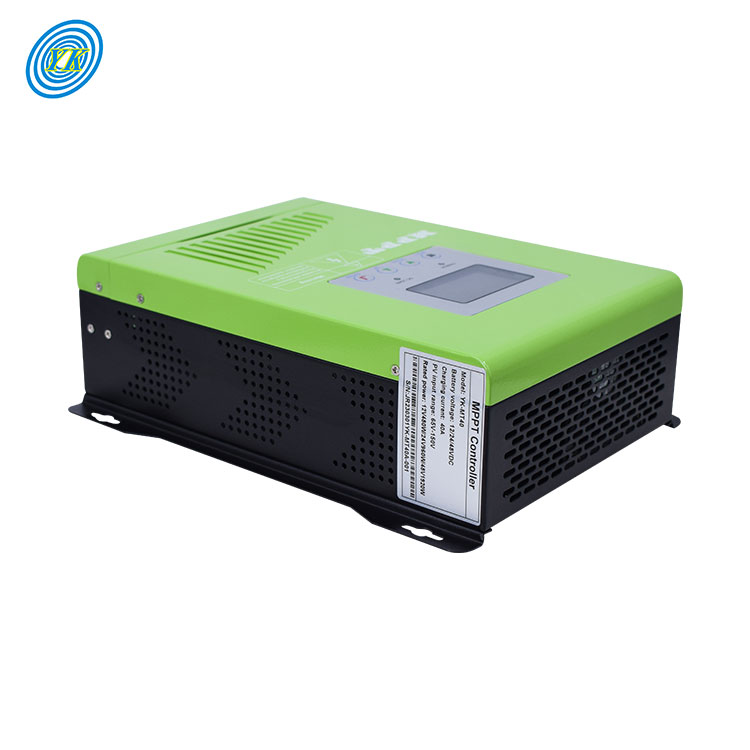
Optimizing Power Efficiency: A Deep Dive into the Role of MPPT Controllers in Wind Energy Systems
Click: 649 Date: 09/20/2023 3::45::02 PM
Optimizing Power Efficiency: A Deep Dive into the Role of MPPT Controllers in Wind Energy SystemsThe demand for renewable energy is increasing as the world seeks to reduce its dependence on fossil fuels. Wind energy is one of the most promising sources of renewable energy due to its ubiquity and potential for high power generation. However, the efficiency of wind energy systems is often limited by the inability to extract the maximum power from the wind at all times. This is where Maximum Power Point Tracking (MPPT) controllers come into play.MPPT controllers are electronic devices that optimize the power output of wind turbines. They do this by continuously adjusting the operational parameters of the wind turbine system to ensure that it operates at its maximum power point (MPP) as much as possible. The MPP is the point at which the power generated by the wind turbine is at its highest, and it varies depending on the wind speed and the characteristics of the turbine.One of the main challenges in implementing MPPT control in wind energy systems is the highly variable nature of wind speeds. Unlike solar power, where the intensity of sunlight can be relatively constant over short periods, wind speeds can change rapidly, making it difficult to maintain the operation of the turbine at the MPP. MPPT controllers address this challenge by using algorithms that can quickly respond to changes in wind speed and adjust the operation of the turbine accordingly.There are several types of MPPT algorithms used in wind energy systems, including Perturb and Observe (P&O), Incremental Conductance (IncCond), and Hill Climbing. These algorithms work by continuously adjusting the operational parameters of the wind turbine and observing the effect on power output. If the power output increases, the adjustment is continued in the same direction; if it decreases, the adjustment is reversed. This process is repeated until the maximum power output is achieved.MPPT controllers play a crucial role in enhancing the efficiency of wind energy systems. By continuously optimizing the operation of the wind turbine to achieve maximum power output, MPPT controllers can significantly increase the amount of power generated by the wind energy system, thereby reducing the cost per unit of energy produced. This makes wind energy a more economically viable source of renewable energy.In conclusion, MPPT controllers are an essential component of wind energy systems. Their ability to optimize power output in response to varying wind speeds makes them indispensable in the quest for more efficient and cost-effective wind energy solutions. As the demand for renewable energy continues to grow, the role of MPPT controllers in wind energy systems is set to become even more important.
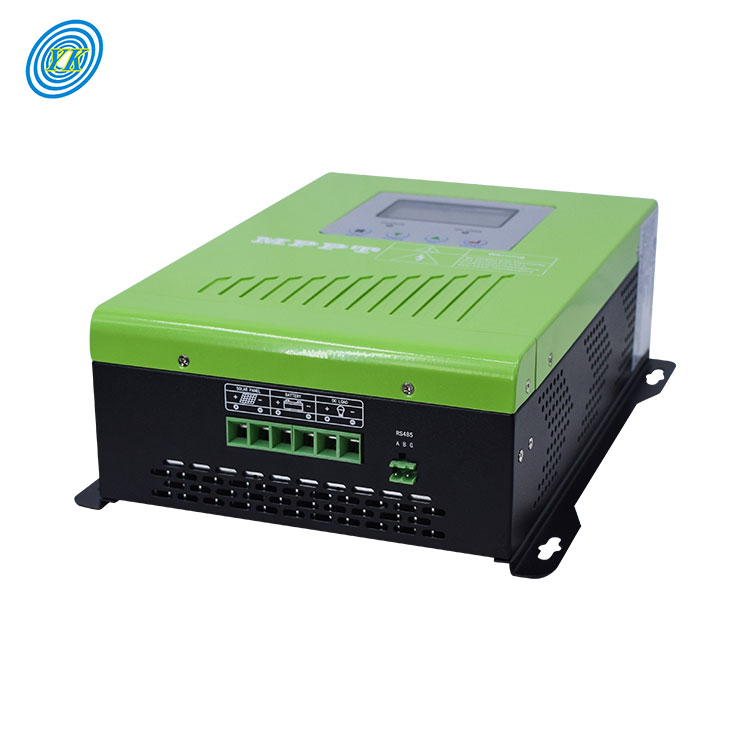
The Power Behind the Scene: How MPPT Controllers Impact Renewable Energy Efficiency
Click: 645 Date: 09/20/2023 2::13::45 PM
The Power Behind the Scene: How MPPT Controllers Impact Renewable Energy EfficiencyIntroductionRenewable energy sources, such as solar power, play a crucial role in addressing the global energy crisis and reducing carbon emissions. However, the efficiency of renewable energy systems heavily relies on the ability to extract the maximum power from the available resources. This is where Maximum Power Point Tracking (MPPT) controllers come into play. MPPT controllers optimize the power output of renewable energy systems by dynamically adjusting the operating point of the energy source, such as a solar panel, to the maximum power point (MPP).Maximizing Power Output with MPPT TechniquesMPPT controllers employ various techniques to optimize power output in different conditions. These techniques can be broadly classified into three types: conventional, artificial intelligence (AI)-based, and hybrid techniques. Some commonly used MPPT techniques include:Constant Voltage Control (CVC): This technique maintains a constant voltage across the solar panel and adjusts the current flowing through it to maximize power output.Hill-Climbing: The Hill-Climbing algorithm continuously perturbs the operating point of the solar panel and compares the resulting power output to determine the direction of maximum power.Perturb & Observe (P&O): P&O is a widely used MPPT algorithm that periodically perturbs the operating point of the solar panel and observes the change in power output to track the MPP.Sliding Mode Control (SMC): SMC-based MPPT techniques use a sliding mode control strategy to track the MPP by continuously adjusting the operating point of the solar panel.Incremental Conductance (IC): IC algorithms utilize the incremental conductance of the solar panel to dynamically adjust the operating point and track the MPP.Artificial Intelligence (AI)-based Techniques: These techniques, such as fuzzy logic controllers, artificial neural networks, and particle swarm optimization, leverage AI algorithms to optimize power output based on real-time data and environmental conditions.Hybrid Techniques: Hybrid MPPT techniques combine conventional and AI-based techniques to handle dynamic and partial-shading conditions more effectively.Impact on Renewable Energy EfficiencyMPPT controllers significantly impact the efficiency of renewable energy systems, particularly solar power systems. By continuously tracking the MPP of solar panels, MPPT controllers ensure that the maximum available power is extracted from the panels, even in varying environmental conditions.Increased Energy Harvesting: MPPT controllers optimize the power output of solar panels by adjusting the operating point to the MPP, resulting in increased energy harvesting efficiency. This allows solar power systems to generate more electricity from the same amount of sunlight.Improvement in Partial Shading Conditions: Partial shading can significantly reduce the efficiency of solar panels, as shaded cells operate at different voltage levels. MPPT controllers mitigate this issue by dynamically adjusting the operating point of each cell to maximize the overall power output, minimizing the impact of shading on the system's efficiency.Enhanced System Performance: By ensuring that solar panels operate at their maximum power point, MPPT controllers optimize the overall performance of renewable energy systems. This leads to higher energy production, improved system reliability, and increased return on investment.Future Trends and Potential ApplicationsAs renewable energy continues to gain traction worldwide, the role of MPPT controllers in enhancing energy efficiency is becoming increasingly important. Here are some potential future trends and applications of MPPT controllers:Integration with Smart Grids: MPPT controllers can play a vital role in integrating renewable energy systems, such as solar panels, with smart grids. By optimizing power output and ensuring seamless integration, MPPT controllers can contribute to the stability and reliability of smart grid networks.Electric Vehicles (EVs): MPPT controllers can be utilized in EV charging stations to maximize the efficiency of solar-powered charging infrastructure. By extracting the maximum power from solar panels, MPPT controllers can help reduce the environmental impact of transportation and promote sustainable mobility.Off-Grid Applications: MPPT controllers are essential for off-grid renewable energy systems, such as standalone solar power systems in remote areas. By optimizing power output, MPPT controllers enable reliable and efficient operation of off-grid systems, reducing the reliance on fossil fuels.In conclusion, MPPT controllers are crucial components in maximizing the efficiency of renewable energy systems, particularly solar power systems. By continuously tracking the MPP of energy sources and optimizing power output, MPPT controllers contribute to increased energy harvesting, improved system performance, and enhanced integration with various applications.
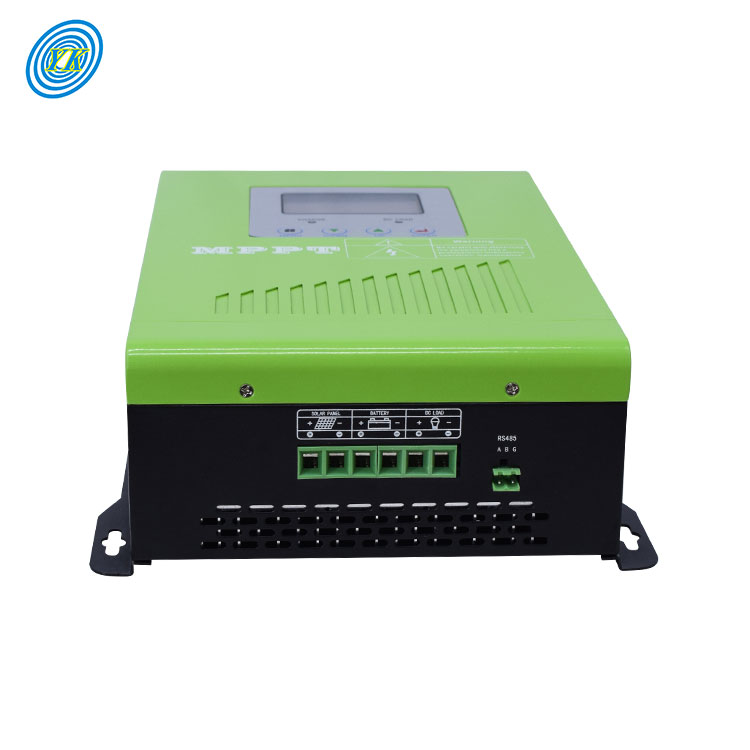
Harnessing the Sun: Novel Applications of MPPT Controllers in Solar Energy Systems
Click: 822 Date: 09/20/2023 2::09::02 PM
Harnessing the Sun: Novel Applications of MPPT Controllers in Solar Energy Systems Introduction: Harnessing solar energy has become increasingly important in the quest for sustainable and renewable energy sources. One crucial aspect of solar energy systems is the efficient extraction of power from photovoltaic (PV) panels. Maximum Power Point Tracking (MPPT) controllers play a vital role in optimizing the power output of PV systems by continuously tracking and adjusting the operating point to the maximum power point (MPP) of the panels. MPPT Techniques and Algorithms Various MPPT techniques and algorithms have been developed to enhance the performance of solar energy systems. These techniques include Perturb and Observe (P&O), Incremental Conductance (INC), Particle Swarm Optimization (PSO), Cuckoo Search (CS), Grey Wolf Optimization (GWO), Neural Networks (NN), Genetic Algorithms (GA), and more. Hybrid PSO_ML-FSSO Algorithm In recent research, a novel hybrid PSO_ML-FSSO algorithm was proposed for MPPT in solar energy conversion systems. This algorithm combines Particle Swarm Optimization (PSO) and Machine Learning (ML) techniques with the FSSO (Flying Squirrel Search Optimization) algorithm. The hybrid algorithm demonstrates improved performance compared to other well-known algorithms such as P&O, INC, PSO, and CSO under different operating conditions. Equivalent Circuit Model of Solar Cell To understand the behavior of PV panels and develop efficient MPPT algorithms, an equivalent circuit model is commonly used. The model includes components such as the series resistance (Rs), shunt resistance (Rsh), diode saturation current (Io), and ideality factor (n). Artificial Neural Network (ANN) Model Artificial Neural Networks (ANNs) have been employed in MPPT algorithms to improve the accuracy and adaptability of the controllers. The input weights of the ANN model can be calculated using the PSO-Trained method and FSSO hybrid approach. The ANN model takes inputs such as solar irradiation, temperature, and other environmental factors to predict the maximum power point of the PV panels.In conclusion, MPPT controllers play a crucial role in optimizing the power output of solar energy systems. The development of novel algorithms and techniques, such as the hybrid PSO_ML-FSSO algorithm, has shown promising results in improving the efficiency and performance of MPPT controllers. By continuously tracking the maximum power point of PV panels, MPPT controllers contribute to the effective harnessing of solar energy for various applications, including grid-tied systems, off-grid systems, solar-powered vehicles, and more. Further research and advancements in MPPT algorithms will continue to enhance the integration of solar energy systems into our daily lives, promoting a greener and sustainable future.
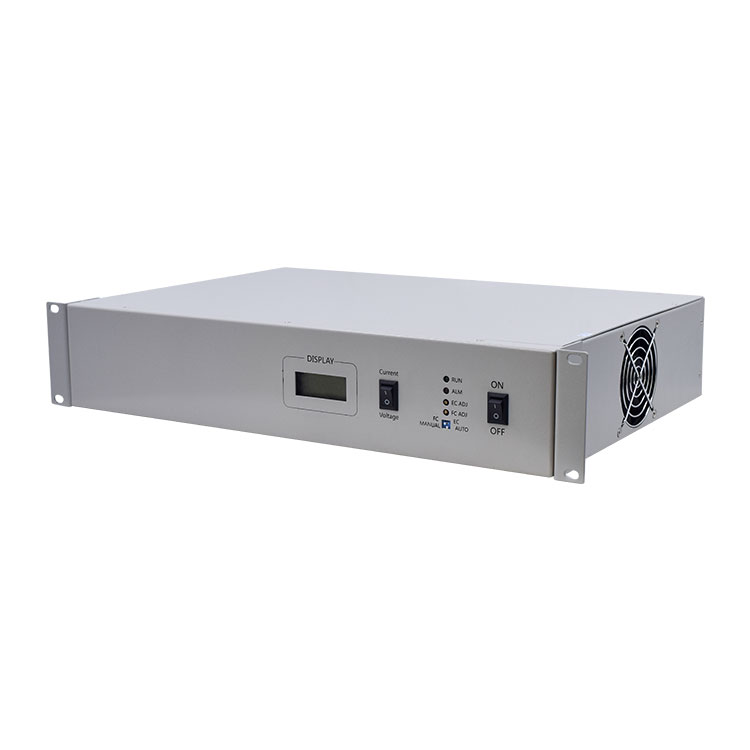
Innovations in Rack-Mounted DC Converters: A Look at the Latest Technologies and Trends
Click: 650 Date: 09/20/2023 10::34::35 AM
Innovations in Rack-Mounted DC Converters: A Look at the Latest Technologies and TrendsRack-mounted DC converters play a vital role in various applications ranging from data centers to renewable energy systems. In recent years, ongoing technological advancements and research have led to significant improvements in their efficiency, performance, and adaptability. This article aims to explore these innovations and provide insights into the latest trends in rack-mounted DC converters.Modern Resonant ConvertersOne of the latest trends in DC converters is the use of resonant converters. These devices have gained attention due to their high power density, reduced switching losses, and versatility in practical applications. Resonant converters have demonstrated superior features compared to conventional converters, including the potential for high-frequency operation and increased efficiency.In particular, the series resonant converter has become attractive for switched-mode power supplies. The advantages of these converters include not only increased power density due to high switching frequencies but also decreased switching losses. However, to further exploit the potential of resonant converters, more research is needed to optimize their control and address issues related to voltage gain, frequency ratio, load values, and inductance ratio.Bidirectional DC-DC ConvertersBidirectional DC-DC converters represent another significant innovation in the field. These converters can handle power flow in both directions, allowing voltage levels to be stepped up or down based on the flow control capacity. This bidirectional power flow capability makes them ideal for applications such as electric vehicle charging and energy storage systems.There are two types of bidirectional converters: isolated and non-isolated. Non-isolated bidirectional DC-DC converters (NIBDCs) do not require high-frequency transformers for electrical isolation, making them efficient and lightweight for low-power applications. On the other hand, isolated bidirectional converters are used in situations where source protection, noise reduction, and voltage matching are critical.Silicon Carbide and Gallium Nitride Power DevicesThe use of silicon carbide (SiC) and gallium nitride (GaN) power devices in rack-mounted DC converters represents a significant technological advancement. These materials offer superior properties, including high-temperature operation, high-frequency response, and low-loss characteristics. The design and performance optimization of DC converters based on SiC and GaN power devices is a promising future trend.Multilevel ConvertersMultilevel converters (MLCs) have emerged as a promising solution for improving the performance of rack-mounted DC converters. They offer numerous advantages, including low harmonic distortion, smaller scale, and less reliance on magnetic circuits. However, selecting an efficient and cost-effective MLC topology remains a challenging aspect, and future research directions may focus on the creation of new types of MLCs with fewer components.In conclusion, the field of rack-mounted DC converters is witnessing rapid advancements and innovations, driven by the need for improved efficiency, adaptability, and performance. By leveraging these latest technologies and trends, we can expect to see more powerful and versatile DC converters in the future.
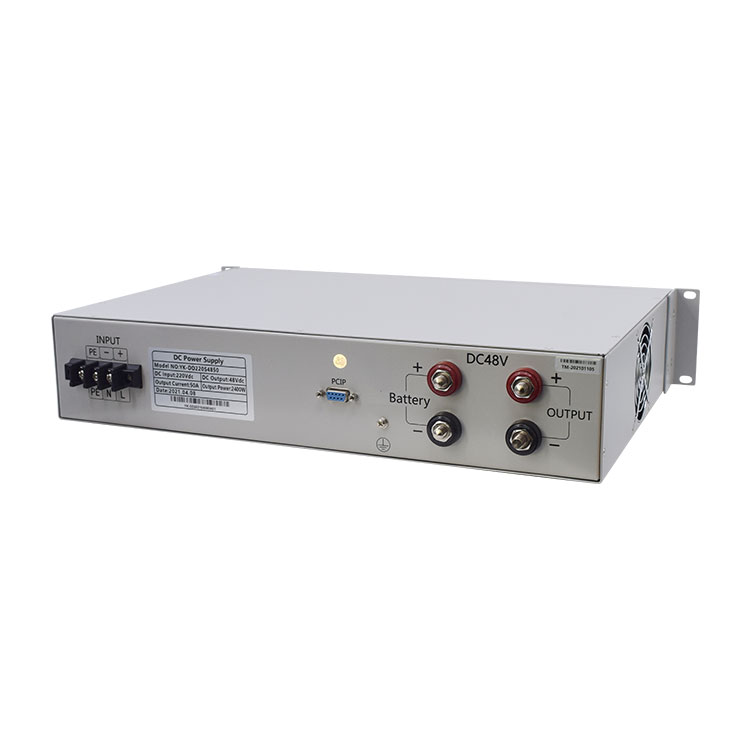
Rack-Mounted DC Converters: Bridging the Gap in Power Electronics
Click: 693 Date: 09/20/2023 09::52::06 AM
Rack-Mounted DC Converters: Bridging the Gap in Power ElectronicsRack-mounted DC converters have become an integral part of many industries, from telecom to automotive, railway, and military. They are used to convert direct current (DC) from one voltage level to another, catering to a variety of applications. This article aims to shed light on the role of these converters in bridging the gap in power electronics.Power Electronics and the Need for DC ConvertersPower electronics is a field that deals with the conversion and control of electric power. The main goal is to ensure the power is delivered efficiently and effectively to the load. However, different loads require different voltage levels and types of current (AC or DC). This is where DC converters come in. They adjust the voltage level to match the needs of the load, ensuring optimal performance and efficiency.Role of Rack-Mounted DC ConvertersRack-mounted DC converters are specifically designed to fit into standard electronic equipment racks. They are widely used in applications where multiple DC voltage rails are required, such as in data centers, telecom equipment, and industrial automation systems.These converters are available in a range of power ratings, from as low as 50W to as high as 300W. They can operate under a wide range of input voltages, up to 385Vdc, and can function in temperatures ranging from -25 to +71°C. This makes them suitable for a variety of environments and applications.Bridging the Gap in Power ElectronicsThere are several ways in which rack-mounted DC converters are bridging the gap in power electronics:Versatility: These converters can be used in a wide range of applications, from powering telecom equipment to providing backup power for data centers. This versatility makes them a valuable tool in the field of power electronics.Efficiency: Rack-mounted DC converters are designed to convert power with high efficiency, reducing energy waste. This is particularly important in industries such as data centers, where energy costs can be significant.Reduced Size and Cost: By integrating the power conversion function into a rack-mountable format, these converters help reduce the size and cost of the overall system. This is especially beneficial in applications where space is at a premium.In conclusion, rack-mounted DC converters are playing a critical role in bridging the gap in power electronics. They offer a versatile, efficient, and cost-effective solution for power conversion, making them an invaluable tool in a variety of industries. As technology continues to advance, it is likely that these converters will play an even more significant role in the future of power electronics.
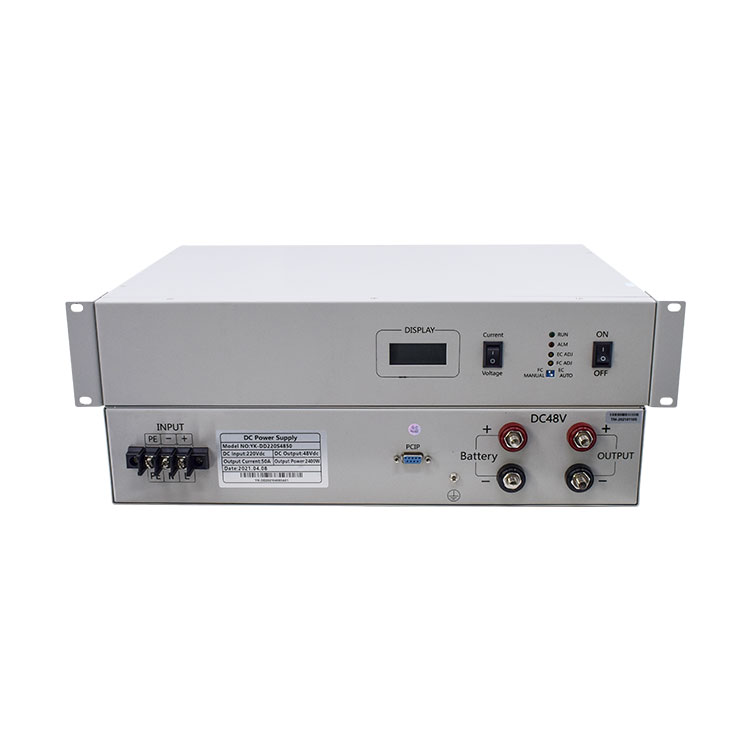
Rack-Mounted DC Converters in Aerospace: Powering the Skies
Click: 906 Date: 09/19/2023 5::18::47 PM
Rack-Mounted DC Converters in Aerospace: Powering the SkiesThe aerospace industry is a field where high-density power solutions are a key requirement. With the ongoing need to reduce size, weight, power, and cost (SWaP-C), while simultaneously increasing command, control, communications, computing, intelligence, surveillance, and reconnaissance (C4ISR) capabilities, the role of rack-mounted DC converters becomes essential.Powering Aerospace and Defense ApplicationsIn aerospace and defense applications, the use of high-efficiency, high-density DC converters can double the internal bus power and keep the aircraft as light as possible. These converters also provide a well-regulated 48V at more than 1kW to enable higher peak RF output power. In unmanned aerial vehicles (UAVs), these power delivery systems support more functionality, increasing payload and runtime.Technological InnovationsCompanies like Vicor are raising the bar by delivering technologically advanced MIL-COTS power solutions that meet demanding SWaP-C requirements with robustness and reliability. Their DCM™ family of isolated, regulated DC-DC converters, for instance, offers solutions with upwards of 2.5X improvement in power density by volume, and over 3x the power density by weight, compared to other solutions.Applications in Satellite CommunicationsIn satellite communications, the use of rack-mounted DC converters enhances onboard voice and data communications by taking advantage of maximized power amplifier efficiency.Custom Power Solutions for AerospaceWhen standard power supply models don't meet the specific needs of a project, companies like Acopian can provide custom power solutions. Their custom power supplies or custom power systems can be designed to meet the unique requirements of aerospace applications. These include rack-mounted, wall-mounted, pluggable and modular configurations, providing redundancy and high reliability.In conclusion, rack-mounted DC converters are a vital component in the aerospace industry. They help to meet the demanding requirements of this field by providing high-density power solutions, enabling more functionalities, and contributing to the efficiency of various applications. With continuous technological advancements and the ability to provide custom solutions, these converters are truly powering the skies.
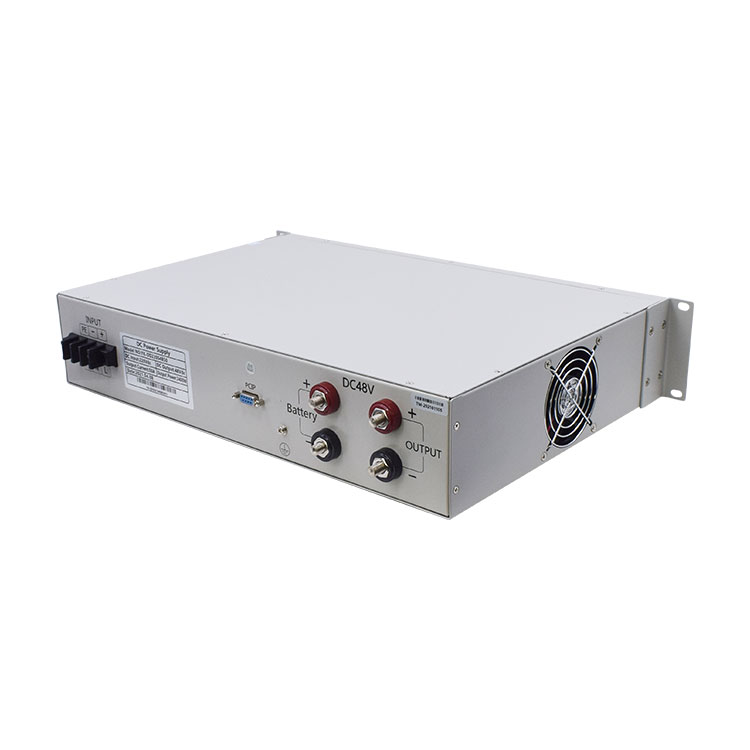
The Future of Renewable Energy: The Role of Rack-Mounted DC Converters
Click: 812 Date: 09/19/2023 5::03::40 PM
The Future of Renewable Energy: The Role of Rack-Mounted DC ConvertersThe world is increasingly turning to renewable energy sources to meet its power needs, with solar and wind energy at the forefront of this revolution. This shift towards cleaner, more sustainable energy has brought about the need for advanced power conversion technologies. One such technology is the rack-mounted DC converter, a device that plays a crucial role in optimizing energy use and storage.The Growing Demand for Renewable EnergyThe demand for renewable energy is on the rise, driven by increasing awareness of climate change and the need for sustainable development. As a result, the energy sector is undergoing a significant transformation, with renewable energy sources gradually replacing fossil fuels.The Role of Rack-Mounted DC Converters in Renewable Energy SystemsRack-mounted DC converters are an essential component in renewable energy systems. They convert variable DC output from renewable energy sources, such as solar panels and wind turbines, into a stable and usable form of power.In solar power systems, for example, rack-mounted DC converters can maximize the energy harvested by tracking the maximum power point of the solar panel array. They also help stabilize the output voltage, ensuring a consistent power supply even when the solar irradiance levels fluctuate.Similarly, in wind energy systems, these converters can optimize the power output by adjusting the generator speed to track the maximum power point according to wind speed variations.Future Prospects: Smart Grids and Energy StorageAs we look to the future, rack-mounted DC converters will also play a significant role in the development of smart grids. These converters can facilitate the integration of various renewable energy sources into the grid, ensuring a stable and efficient power supply.Furthermore, with the advancement in energy storage technologies, such as lithium-ion batteries and flywheels, the role of rack-mounted DC converters will become even more significant. They can help manage the charging and discharging of these storage systems, thereby balancing the power supply and demand.ConclusionRack-mounted DC converters are an integral part of the renewable energy landscape. They not only make renewable energy sources more efficient but also pave the way for more advanced energy systems. As the world continues to embrace renewable energy, the importance of these converters will only continue to grow.
